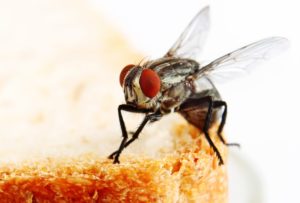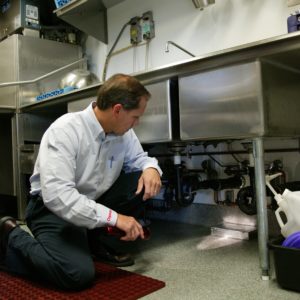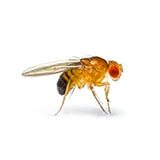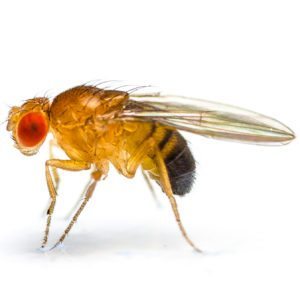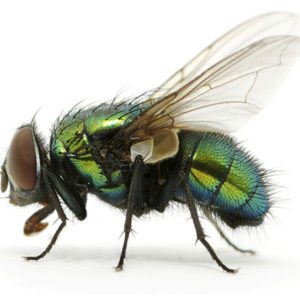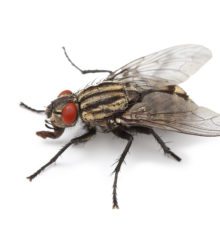Flies are one of the most unwelcome guests in the foodservice industry. The tiny pests can cause major headaches for restaurant and bar owners, and put a brand’s reputation at risk. At Copesan we understand that your brand, customers and employees can be jeopardized by a single fly. Read on for more information regarding the types of flies restaurants often deal with, the dangers they present and what you can do about them.
Types of Flies in Restaurants
Fly problems typically start in the kitchen where food is plentiful. One of the most common species of flies found in the restaurant industry is small fruit flies (or vinegar flies). The tiny, red-eyed fruit fly is primarily attracted to the fermenting odors of over-ripened fruit and vegetables – soft fruits are their favorite. The closely-related dark-eyed fruit fly prefers more decayed organic matter and is more commonly found in drains and under dirty floor mats. A piece of fruit which may have rolled under a cabinet unnoticed can easily contribute to a fruit fly infestation.
Bottle flies and house flies may also be drawn near and into your restaurant. Both the bottle fly and house fly are attracted to food odors, garbage and decaying matter. Because of this, you will likely find them accumulating around garbage cans and dumpster areas, though they will rest on many surfaces. Exposed food and food prep surfaces are attractive to these filth flies and are at risk of contamination.
If you find small flies hanging around your grease traps, they may be phorid flies. In commercial kitchens, these flies are known to breed in grease traps. Another fly that feeds on decaying matter (they’re also known as mausoleum flies), phorid flies can also spread bacteria and disease. Their presence can also indicate a potential break in a plumbing line or existence of a dead animal inside of a wall or crawl space.
Drain flies look like tiny moths and will likely be found hovering around your drains or under your cabinets. These flies spend most of their lives feeding off the organic matter inside of kitchen floor drains and can spread bacteria to food or food prep surfaces.
To learn more about the different types of flies attracted to restaurants and the foodservice industry, see the flying insects section of our pest library.
Fly Solutions For Restaurants
Keeping your restaurant fly free starts with preventative measures. Read on for actions you can take at your restaurant or bar to keep flies out before they become an issue.
-
Sanitation and Exclusion Are Key
Keeping your restaurant clean is the best way to avoid fly infestations. Wipe down countertops, bars, tables, kitchen areas, and soda or beverage dispensers on a regular basis throughout the day. Clean areas under appliances and shelves nightly. Garbage cans should be kept tightly covered and emptied frequently. If needed, deep cleaning can also help remove any hidden decaying food or liquid residue, particularly in drains, between tiles, in grout and at floor/wall junctions. Establishing a simple cleaning routine with your staff to maintain a clean environment that flies will be less attracted to.
Doors and windows should be kept closed when not in use. Those that must remain open should be screened to help keep pests out. Propping doors open for breaks, deliveries or to increase airflow in certain areas allows flies (and other pests) easy entry into your restaurant.
-
Consider A Fan
Some flies are weaker flyers. Using a fan for strong air movement will prevent those flies from landing on produce, other exposed food items, or surfaces and laying eggs or causing contamination.
-
Be Mindful of Moisture
Sinks, ice wells, pails of water for cleaning, floors, and drains are not only key areas for water to build up but for flies to breed. Limiting water sources and moist conditions help cut down on fly infestation.
Keep Your Brand Protected
Copesan understands that running a restaurant is a full time job. Your focus should be on managing your staff and making sure everything runs smoothly, not pests. Copesan is here to serve you and keep your reputation intact. Our Culinary Care® program is specifically designed for the foodservice industry. This comprehensive pest management program helps you achieve a pest-free environment and provides ultimate brand protection. This program can also be coupled with our Commercial Fly Control & Prevention program.
